How to Effectively Eliminate Mushrooms from Your Lawn
Maintaining a pristine, healthy lawn is often a source of pride for homeowners, but the sudden appearance of mushroom can be both unsightly and concerning. Mushrooms often sprout overnight, creating a common but frustrating issue to deal with. In this article, we’ll delve into how to get rid of mushrooms in lawn. Whether you’re dealing with a minor infestation or a widespread problem, our practical tips and expert advice will help you tackle these pesky intruders with confidence.
Common Causes of Mushroom Growth
Mushrooms often grow in lawns due to a combination of factors that create ideal conditions for their growth. These fungi thrive in moist, shaded areas where there is abundant organic matter. Overwatering, poor drainage, and excessive thatch can contribute to the damp conditions mushrooms love. Additionally, decaying organic materials such as tree roots, leaves, and grass clippings provide a rich food source for the fungi. Understanding and addressing these conditions can prevent future mushroom growth.
Excess Moisture
Excessive moisture, due to overwatering or poor drainage, is a primary factor contributing to mushroom growth in lawns. When the soil remains consistently damp, it creates a perfect environment for fungi to grow and thrive. Overwatering your lawn can saturate the soil, while poor drainage prevent water from dispersing properly, both leading to persistent moisture that encourages mushroom growth.
To manage moisture levels, it’s essential to adjust your watering schedule accordingly. If your lawn is consistently too moist, you should water your lawn deeply but infrequently to allow the top layer of soil to dry out between watering sessions. Improving drainage can also help. This might involve aerating the soil or installing drainage systems to redirect excess water. By maintaining balanced moisture levels, you can reduce the likelihood of more mushrooms sprouting in your lawn.
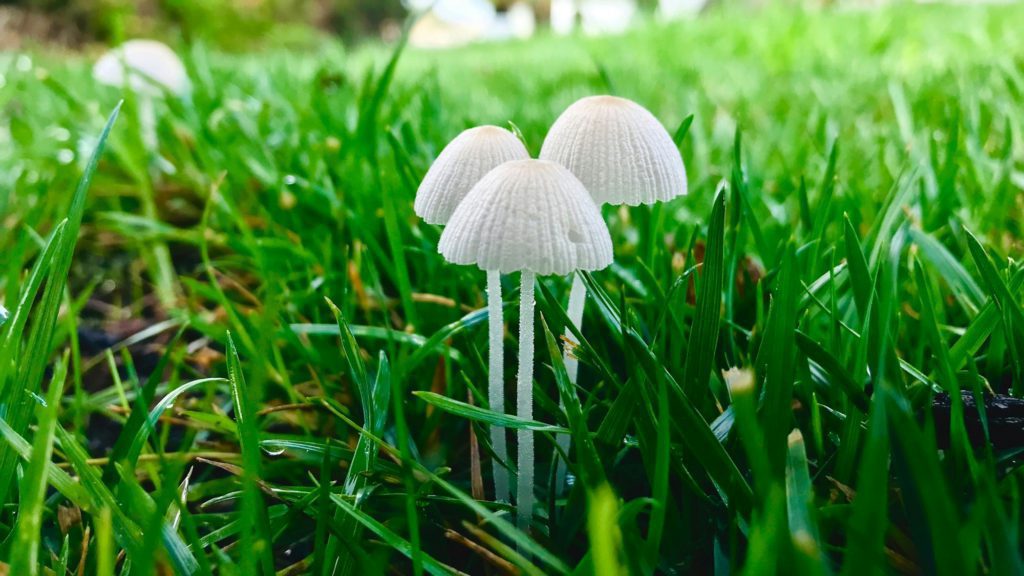
Organic Matter Accumulation
Organic debris such as fallen leaves and grass clippings create an ideal environment for mushrooms to grow in by providing a rich food source. As these materials decompose, they release nutrients that fungi thrive on, leading to increased growth across your lawn. To avoid increasing the risk of mushroom growth, it’s important to practice property lawn maintenance. Regularly rake and remove debris, mow your grass at an appropriate height, and use a mulch mower to finely chop grass clippings. By maintaining a clean and well-manicured lawn, you can create an environment less conducive to fungal invasions.
Shaded Areas
While shade is important for comfortably lounging in your yard, it also creates an ideal environment for mushrooms by maintaining cooler, more humid conditions. Areas under dense tree canopies or beside tall structures often receive less sunlight, allowing moisture to linger and thus promoting mushroom growth. To manage shade and improve sunlight exposure for you lawn, consider pruning overhanging branches and thinning dense tree canopies to allow more light through.
Effective Methods for Mushroom Removal
When determining how to get rid of mushrooms in lawn, we look for the most effective options. This involves a combination of both manual and chemical solutions. For immediate results, simply wear gloves and pull the mushrooms out by their base. Regularly mowing the lawn at the right height can also help by cutting off the mushroom caps before they release spores. For a long-term solution, consider using fungicides specifically designed for lawn use; these chemicals helps eradicate existing fungi and prevent new growth.
Manual Removal Techniques
Manually removing mushrooms from your lawn is a straightforward process that requires a few basic tools and some attention to detail. To begin, equip yourself with a pair of gardening gloves to protect your hands. From there, either with a garden trowel or your hands, pull the mushrooms from the base, being careful to remove the root system. Removing the root system will help ensure the mushrooms won’t grow back. Collect and dispose of the mushrooms rather than composting them. Regularly inspect your lawn and continue to remove new mushrooms to keep your lawn clear.
Using Fungicides
Various types of fungicides are available to combat mushroom growth in lawns, including contact fungicides, systemic fungicides, and granular fungicides. Contact fungicides kill fungi upon direct contact, while systemic fungicides are absorbed by the grass and provide internal protection. Granular fungicides are spread over the lawn and gradually release their active ingredients. When applying fungicides, it’s crucial to follow the manufacturer’s instructions carefully. Wear protective gear such as gloves and masks to avoid skin and respiratory exposure. Also, ensure pets and children are kept off the treated area until it is safe.
The benefits of chemical treatments include quick and effective elimination of fungi, preventing further mushroom growth. However, the drawbacks include potential for environmental impact, harm to beneficial microorganisms, and the risk of chemical runoff.
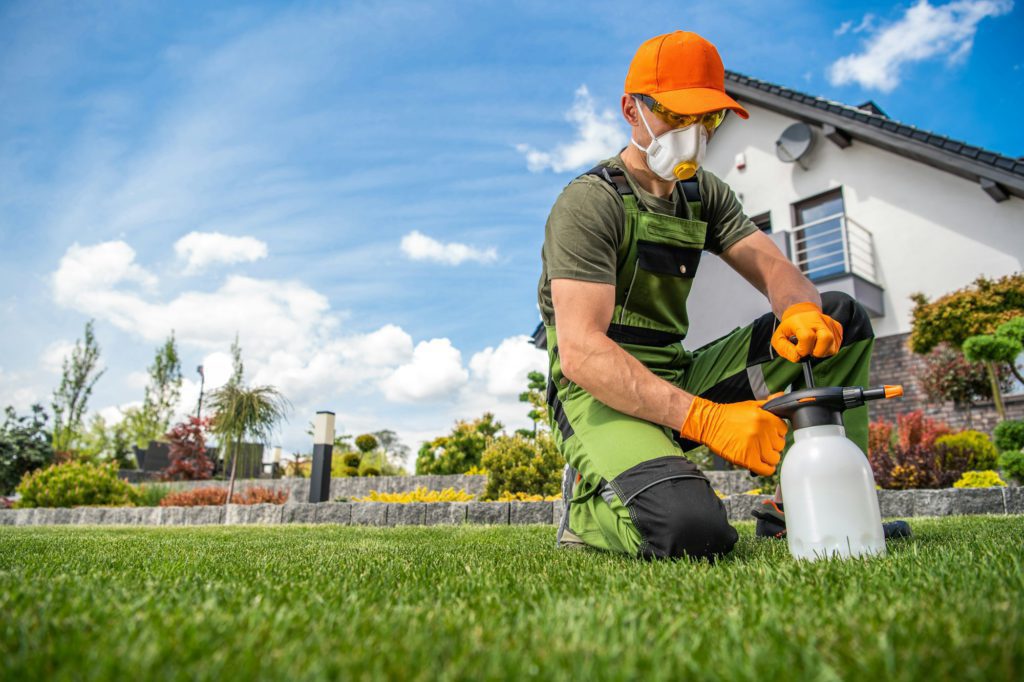
Natural Remedies
For an eco-friendly option, household solutions like baking soda or vinegar can be effective. Baking soda helps neutralize the acidic environment that fungi thrive in. To use baking soda, mix two tablespoons of baking soda in a gallon of water and spray the solution directly onto the mushrooms and surrounding soil. Repeat this process every few days until the mushrooms disappear.
Horticultural vinegar is another natural option. This type of vinegar can be found at your local garden center and is typically four times stronger than household vinegar. For this method, mix one part vinegar with four parts water in a spray bottle and apply it directly to the mushrooms. Be cautious with vinegar as it can damage nearby plants. To ensure the mixture won’t harm your grass, always test a small area first.
Preventative Measures to Avoid Future Growth
Prevent mushrooms from reappearing in your lawn by implementing several proactive strategies that address the underlying conditions promoting fungal growth. These strategies include managing lawn moisture levels, improving drainage, reducing shade, and regularly removing debris. Maintaining proper lawn care practices, including mowing at the correct height, dethatching and fertilizing appropriately, will ensure your lawn is less hospitable to mushrooms.
Lawn Aeration
Aerating the lawn is an essential practice that improve soil drainage, thereby reducing the conditions that favor mushroom growth. By creating small holes in the soil, aeration allows air, water, and nutrients to penetrate deeper into the ground. This also alleviates soil compaction and promotes healthier grass roots. After aeration, the enhances drainage prevents water from pooling on the surface, making the environment less conductive to fungi.
Aeration should take place during the growing season, typically in the spring or fall. To aerate effectively, aim for evenly spaces holes about 2-3 inches apart, covering the entire lawn. Regular aeration, ideally once a year, ensures that your lawn remains well-drained and resistant to mushroom growth.
Proper Lawn Mowing Practices
Maintaining the correct grass height and a regular mowing schedule are both key practices in deterring mushroom growth in your lawn. Keeping your lawn as an optimal height, typically between 2.5 to 3.5 inches, ensures that it remains dense and healthy. Regular mowing also helps by cutting off mushroom caps before they can release spores, further preventing their spread. Additionally, removing grass clippings after mowing reduces organic debris that can decompose and provide nutrients for fungi.
For homeowners seeking professional assistance, LawnGuru offers expert lawn mowing services that ensure your grass is maintained regularly and correctly. By utilizing LawnGuru’s lawn mowing services, you can enjoy a healthier, mushroom-free lawn while saving time and effort. Experience the transparency of instant pricing with our instant lawn mowing quote service on LawnGuru’s website here.
Soil Testing and Adjustments
Testing soil pH and nutrient levels is a crucial task when maintaining a healthy lawn and avoiding mushroom growth. Mushrooms often thrive in acidic soil or soil deficient in essential nutrients. By regularly testing your soil, you can identify imbalances and make necessary adjustments to promote healthy grass. Similarly, by ensuring the soil has adequate nutrients through proper fertilization your grass will be strong enough to outcompete the mushrooms for nutrients. These adjustments not only deter mushroom growth but also enhance the overall vitality and strength of your lawn.
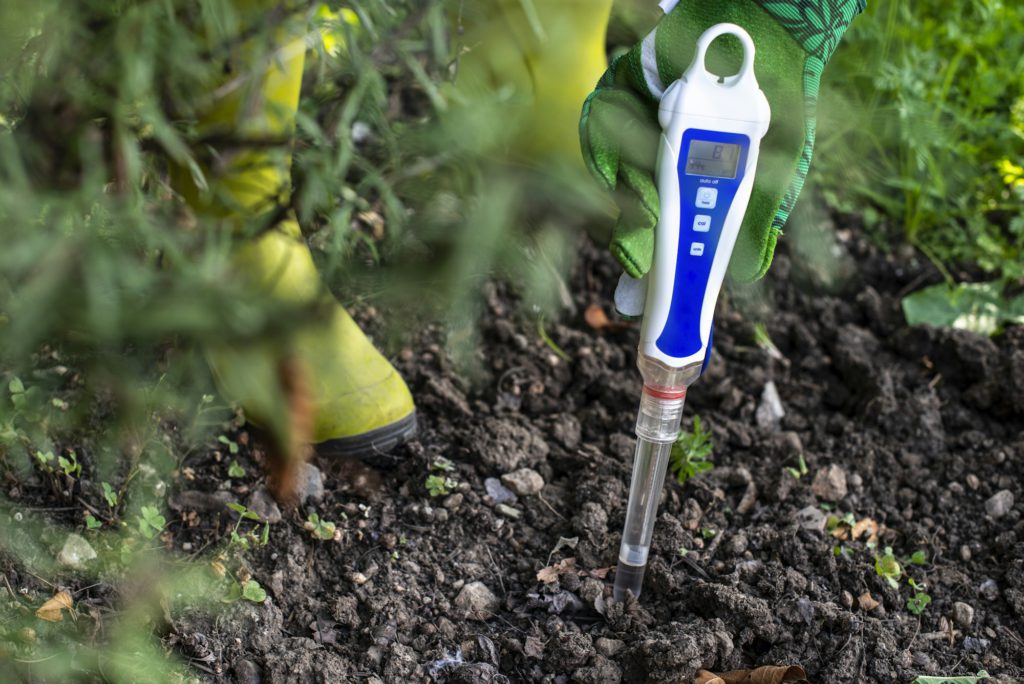
Long-Term Lawn Health and Maintenance
Ongoing lawn care is essential for ensuring the long-term health of your grass and minimizing mushroom growth. By considering the specific issues your lawn faces and what solutions to take, you can create a cohesive plan to maintain your lawns overall health and minimize mushroom growth. Start with consistently managing your lawns moisture levels through proper watering and improving drainage. Regularly maintaining your lawn mowing schedule and removing organic debris will help prevent any buildup of nutrients that mushrooms thrive on. Lastly, reduce shade and ensure adequate sunlight exposure to discourage fungal growth. By continuing regular lawn care and integrating these additional practices into your routine, homeowners can maintain a healthy lawn that is resilient against mushroom invasions.
Regular Fertilization
Proper and regular fertilization is crucial in strengthening grass and reducing the chances of mushroom growth. Fertilizing your lawn supplies essential nutrients your grass needs to promote and maintain robust growth, helping it outcompete fungi for resources. A well-fertilized lawn is more resilient, with dense and healthy grass that shades the soil, reducing moisture levels that mushrooms need to thrive.
To maintain optimal health, follow a fertilization schedule throughout the year. Begin with a balanced fertilizer in early spring to kickstart growth. In late spring to early summer, apply a high-nitrogen fertilizer to support growth. In late summer, switch to a balanced or slow-release fertilizer to sustain growth. Finally, use a high-potassium fertilizer in the fall to strengthen grass roots and prepare the lawn for winter.
Watering Guidelines
Implementing a proper watering schedule is essential for maintaining lawn health while minimizing conditions favorable to mushroom growth. Mushrooms thrive in prolonged wet conditions so we need to strive a balance between properly watering your lawn and overwatering. Ideally, you should water early in the morning to allow grass blades to dry throughout the day and aim for about 1 inch of water per week. Monitor soil moisture level by regularly testing your lawn with a soil probe. If the lawn is adequately hydrated, the probe should easily penetrate the ground.

Seasonal Lawn Care Tips
To maintain a healthy, mushroom-free lawn year-round, it’s essential to adapt your care routine to each season. In spring, focus on rejunvenating the lawn after winter dormancy by aerating and applying a balanced fertilizer to promote growth. As temperature rise for the summer, adjust watering practices to ensure deep hydration without over-saturation, and mow regularly at the appropriate height to discourage mushroom growth. Fall is ideal for overseeding to thicken the turk and applying a high-potassium fertilizer to strengthen roots before winter. In winter, reduce watering frequency and avoid walking on frozen grass to prevent damage.
Throughout the year, monitor moisture levels, promptly remove fallen leaves and debris, and adjust fertilization schedules based on soil tests to maintain nutrient balance. By tailoring care routines to seasonal changes and staying proactive, homeowners can foster a resilient lawn that remains healthy and mushroom-free year-round.
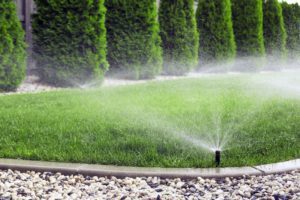
How Long to Water Lawn in Summer
To keep your lawn lush during summer, it’s essential to water it properly. Aim for 1 to 1.5 inches of water each week, delivered over two to three sessions lasting
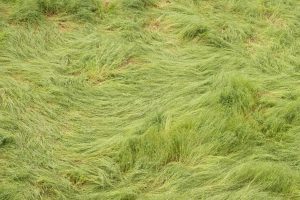
When Does Grass Stop Growing?
As you consider the growth cycle of grass, it’s essential to understand how temperature and environmental conditions dictate when it stops growing. Cool-season grasses, for instance, halt as temperatures drop

How to Get Rid of Clover in Lawn
Just as Hercules faced the intimidating task of cleaning the Augean stables, managing clover in your lawn can seem overwhelming. Yet, with the right strategies, it becomes a manageable task.

How Often and How Long Should You Water Your Lawn
When it comes to watering your lawn, it’s essential to balance timing, frequency, and depth for best health. Aim for about an inch of water per week, ideally split into
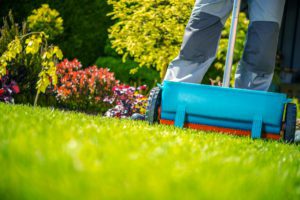
Best Grass Seed for Wisconsin Lawns and How to Choose the Right One
In Wisconsin, selecting the best grass seed mix is essential for a thriving lawn. You’ll want a combination of Kentucky bluegrass, perennial ryegrass, and tall fescue, each chosen for its

How and When to Top Dress Your Lawn
Top dress your lawn by spreading a thin layer of 90% sand and 10% compost to boost soil health and appearance. Apply for best results: early spring or fall for


